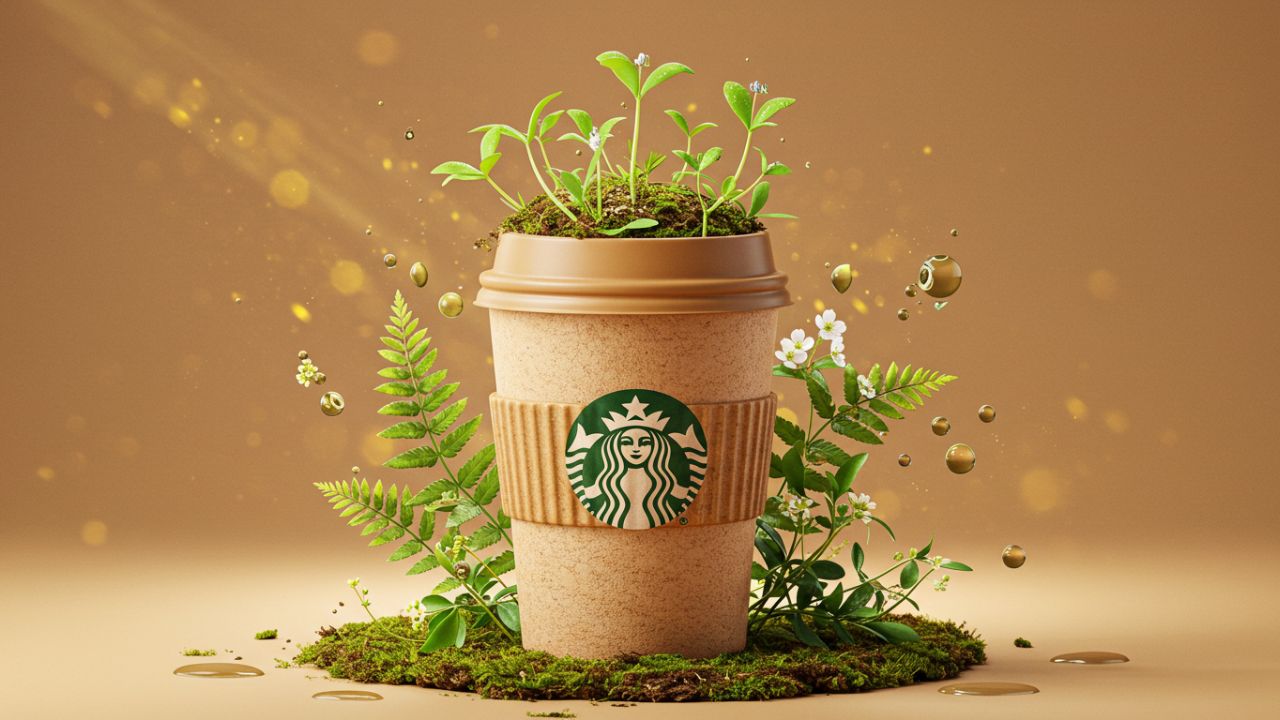In an era where consumers increasingly demand corporate accountability, Starbucks has positioned itself as a leader in sustainability, using Instagram not just as a marketing tool but as a platform to educate, engage, and inspire its global audience. With over 26 million followers, Starbucks’ Instagram account is a masterclass in blending brand storytelling with environmental advocacy. This article explores how the coffee giant utilizes Instagram to promote sustainability, from visually compelling campaigns to strategic partnerships, fostering a community around eco-conscious living.
1. Visual Storytelling: Crafting a Green Narrative
Starbucks’ Instagram feed is a tapestry of earthy tones, lush greenery, and minimalist aesthetics that mirror its sustainability ethos. The brand uses high-quality imagery and videos to showcase its eco-friendly initiatives:
- Reusable Cups and Packaging : Posts highlight the shift from single-use cups to reusable alternatives, often featuring baristas holding sleek, reusable tumblers or customers proudly using their own cups.
- Ethical Sourcing : Behind-the-scenes content showcases coffee farmers, emphasizing fair trade practices and partnerships with organizations like Conservation International.
- Plant-Based Menu Innovations : Vibrant flat lays of avocado toast, oat milk lattes, and plant-based snacks are paired with captions explaining how these choices reduce carbon footprints.
2. Campaigns That Resonate: #StarbucksGreenies and Beyond
Starbucks’ hashtag-driven campaigns encourage user-generated content (UGC) while amplifying sustainability messages:
- #StarbucksGreenies : This initiative invites followers to share photos of their reusable cups, rewarding participants with discounts. The hashtag has generated thousands of posts, creating a sense of collective action.
- Earth Month Takeovers : During April, Starbucks partners with eco-influencers to curate Instagram Stories, host Q&A sessions, and share tips on reducing waste.
- The “Greener Apron” Project : A Reels series profiles employees (partners) involved in sustainability projects, humanizing the brand’s efforts.
3. Educational Content: Turning Followers into Advocates
Instagram’s interactive features are used to educate audiences:
- Infographics : Carousel posts break down complex topics like carbon neutrality or water conservation in coffee farming.
- Polls and Quizzes : Stories ask followers to guess the carbon footprint of a latte or vote on new sustainability goals, boosting engagement.
- Mini-Documentaries : Long-form video content on IGTV explores initiatives like Starbucks’ “Resource Positive” vision, aiming for a 50% reduction in carbon emissions by 2030.
4. Collaborations and Influencer Partnerships
Starbucks partners with eco-conscious influencers and NGOs to amplify its message:
- Collabs with Eco-Influencers : Zero-waste advocates and climate activists take over Starbucks’ account, sharing tips aligned with the brand’s values.
- NGO Spotlights : Posts highlight partnerships with groups like the Ocean Conservancy, tying cup recycling drives to broader environmental causes.
5. Measuring Impact: Transparency and Accountability
Starbucks uses Instagram to share progress reports, fostering trust:
- Annual Sustainability Roundups : Year-end posts celebrate milestones, such as diverting 1 billion cups from landfills.
- Real-Time Updates : Stories share live updates from reforestation projects or renewable energy installations funded by Starbucks.
6. The Role of Aesthetics: Designing for Engagement
The brand’s visual strategy merges sustainability with aspirational lifestyle imagery:
- Color Palette : Earthy greens, warm browns, and soft neutrals dominate, evoking nature and tranquility.
- Minimalist Layouts : Clean, uncluttered posts reflect the simplicity of sustainable living.
Conclusion
Starbucks’ Instagram strategy transcends traditional marketing, positioning sustainability as a shared journey rather than a corporate obligation. By blending storytelling, education, and community-building, the brand turns followers into advocates, proving that social media can be a powerful tool for driving both profit and planetary good.

Leave a Reply